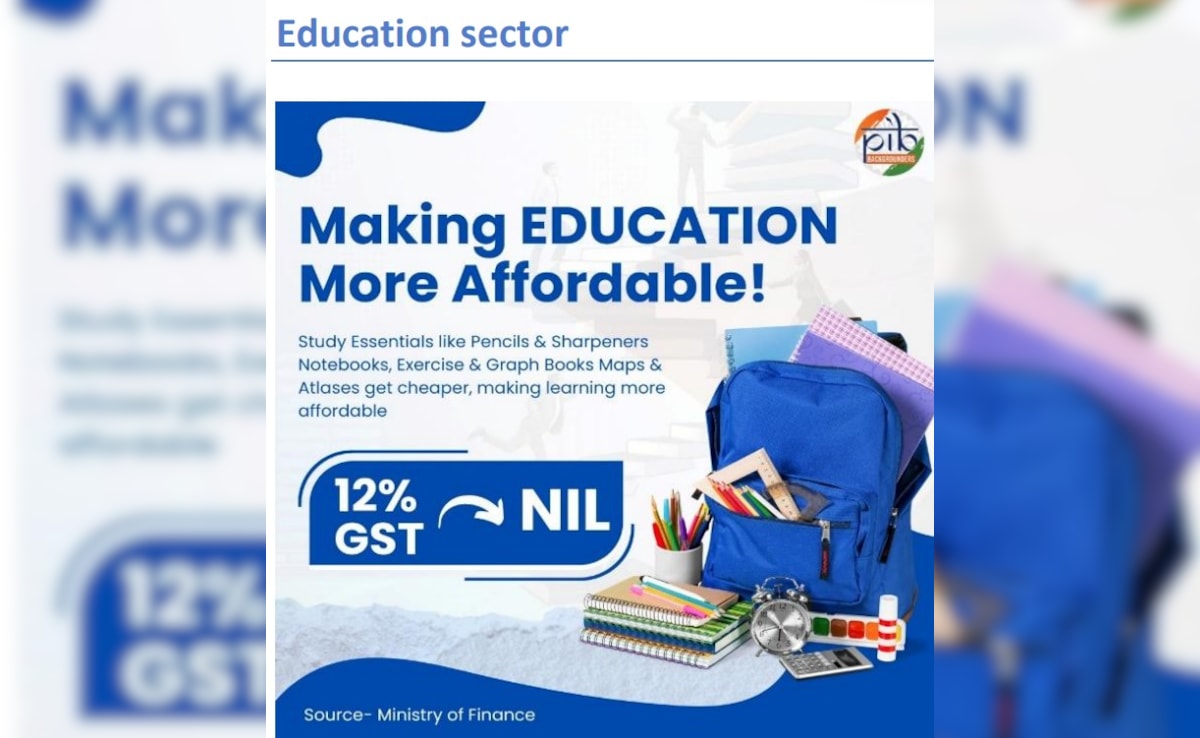
GST Reforms 2025: Union Finance Minister Nirmala Sitharaman, chairing the 56th meeting of the GST Council on September 3, approved Next-Gen GST reforms aimed at improving the lives of the common man and ensuring ease of doing business for traders and small enterprises.
Announced ahead of Diwali, these much-awaited reforms follow Prime Minister Narendra Modi's Independence Day address, in which he had assured measures to reduce the tax burden on households.
The reforms also provide relief to students, as essential study materials such as exercise books, pencils, erasers, crayons, and sharpeners will now attract 0% GST. Additionally, items like geometry boxes, school cartons, and trays have been shifted from the 12% slab to 5%. This reduction is expected to make learning essentials more affordable, ease the financial burden on families, and improve access to education.

In his Independence Day speech, the Prime Minister had said, "The government will bring Next-Generation GST reforms, which will bring down the tax burden on the common man. It will be a Diwali gift for you." He stressed that the reforms would benefit the middle class, youth, farmers, MSMEs, and women, while supporting long-term growth.
Introduced on July 1, 2017, the Goods and Services Tax (GST) remains India's biggest indirect tax reform, subsuming multiple central and state levies under one framework. Over the past eight years, it has undergone rationalisation and digital integration, becoming the backbone of indirect taxation.
The new GST structure, effective from September 22, will have two tax slabs: 5 per cent and 18 per cent. Sweeping rate cuts will apply across agriculture, MSMEs, healthcare, labour-intensive industries, and households.
